Plants with spiky leaves have been in existence and were considered a perfect biological razor wire that ensures privacy by safeguarding homesteads from raiding intruders or burglars or serving as barriers for livestock.
They deliver structured form with their narrow leaves, pointy spines, and toothed edges.
In other words, by technically growing plants with spiky, thorny, and dense bushes or leaves, you are inadvertently creating and designing a practical obstacle to scare any intruder or animal while beautifying your home and keeping your landscape very attractive.
Some of the most popular spiky leaf plants include agaves, aloe vera, cacti, snake plants, dragon trees, etc.
Table of Contents
Beautiful Plants With Spiky Leaves
1. Agaves
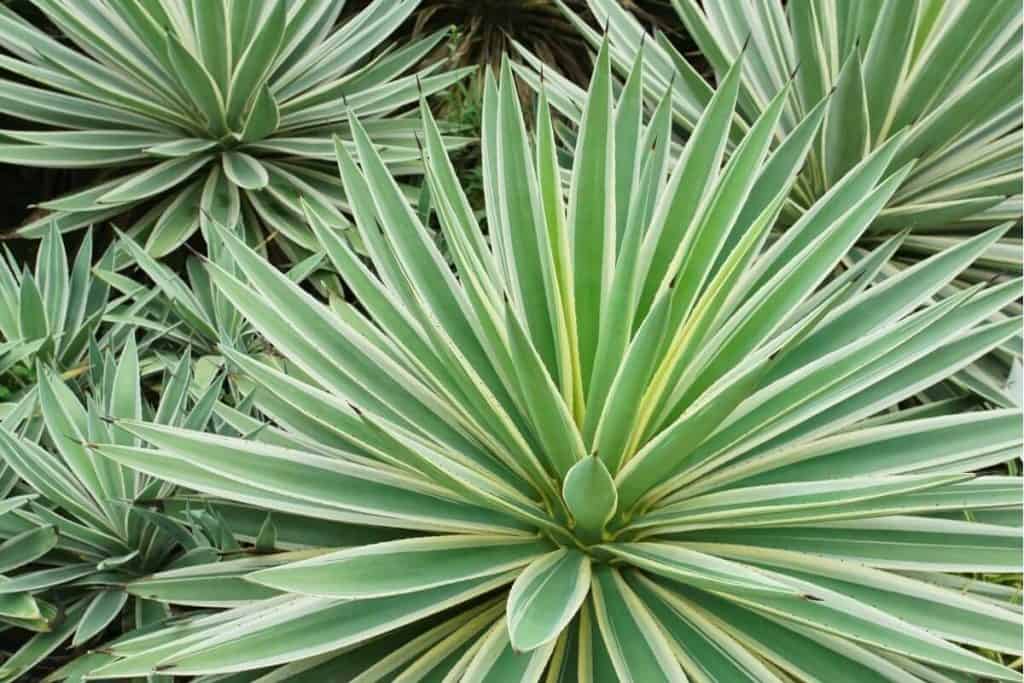
There are lots of agave varieties, including those that are suitable for indoor planting. Agaves are one of the most popular spiky plants, displaying steels' blue foliage.
One of its appealing features is the height which is around 6 feet tall. They produce a flower only once and die after.
Most times, agave can take ages to see it produce the flower, yet, they possess many baby plants from the base of the plant that can replace the dead one.
It is primarily utilized in landscaping huge gaps because its long spiky leaves naturally blend in to produce a rosette and beautiful cup-shaped flower head.
Again, agaves possess green or grey-colored leaves with tiny spikes around them. They require adequate sunlight and soil that infiltrates quickly.
Hence, make sure you plant them in the correct location of your landscape with some cactus mix and little stones that can add spice to the views.
Related Post: Beautiful Trees with Fern-Like Leaves
2. Aloe Vera (Aloe barbadensis)

Aloe Vera is one of the most popular indoor plants with spiky leaves. Its leaves are also typically long and form a vase shape from the root.
It is called spiky because the edges of its leaves are razor-sharped that it can easily prick your fingers. Aloe Vera doesn't only beautifies homes and gardens but is also medicinal.
It is herbal because its spiky leaves have a gel that you can use to treat cuts and burns, lower blood sugar levels, and serve as a natural laxative and heartburn relief, mouthwash, skincare, and healthy hair treatments, to mention a few.
Additionally, it also purifies the air, emits oxygen, and ensures you have the best livable environment.
3. Cacti (Barrel Cactus)
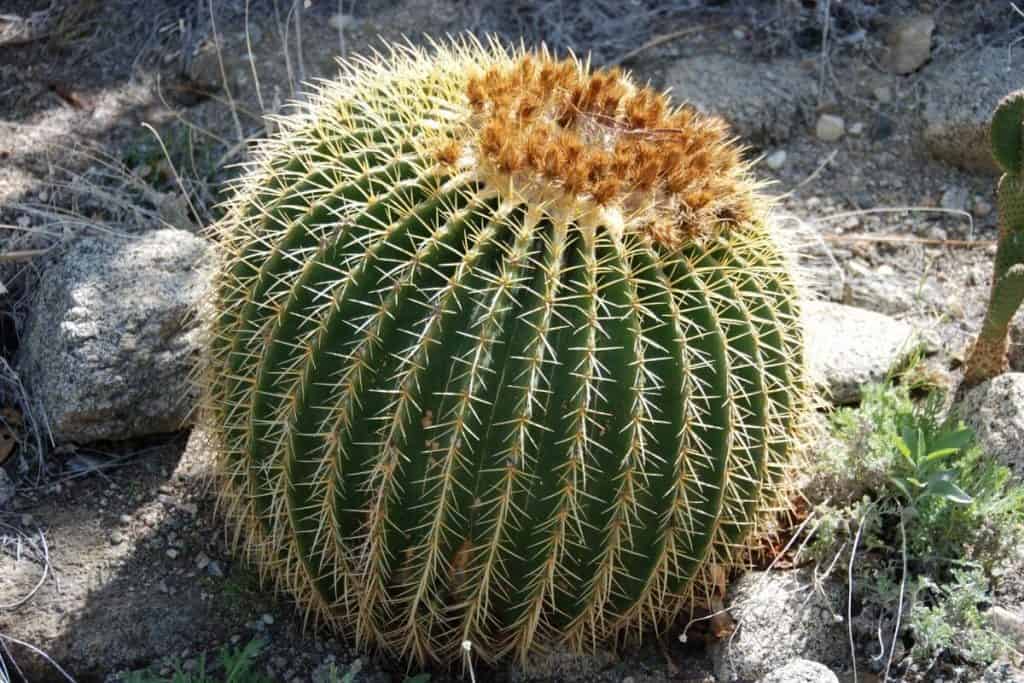
Cacti is an excellent addition to your defensive plantings. They are very low-maintenance houseplants that grow best with dry air and lots of sunlight.
There are several varieties of Cacti, but the best of the lot is the barrel cactus, popular known as "mother-in-law's seat." It is composed of two genera, namely, Echinocactus and Ferocactus.
As the name implies, barrel cactus possesses a rounded form or shape while growing and is made up of aggressive spikes around each of its ribs, which radiate from the top of the barrel downwards. Indeed, nobody, not even my mother-in-law, can sit on it, at least, not willingly.
Most cactus thrive in Zones 9-11 and perform double functions as decorative and beautifying elements and an effective barrier for intruders or animals alike. It can grow up to 3feet tall with the same diameter at maturity, although it takes ages to get to those points.
Barrel cactus is best in desert conditions, as it requires a lot of sun and very little water. However, it can tolerate some frost, not for a very long time.
You can plant a few or more in a rockery underneath a window or at the bottom of fence lines. Like Aloe, it's medicinal for relief of hangovers and high blood sugar levels, amongst others.
But, you have to be careful when planting them near your home to prevent them from ending up as an obstacle or hiding either a potential escape route or any area that may require maintenance.
Also, ensure that children and pets are kept far away from them, as it has thorns that show no mercy, that even gardeners wear thick leather gloves as a safety measure.
4. Haworthia (Haworthia attenuata)
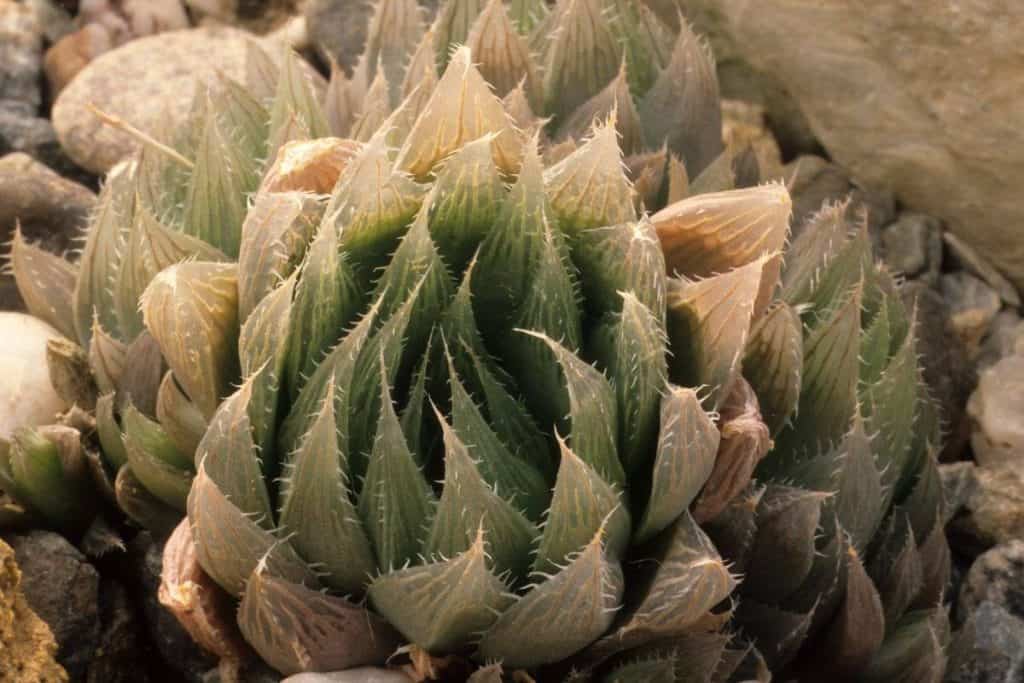
Haworthia is one of the best plants that have spiky leaves. They are small succulents that possess tightly packed spiky leaves.
These beautiful plants can only grow between 3 to 5 inches tall. In other words, they are the ideal plants for desks or windowsills.
The Haworth is a plant that can survive both direct and indirect sunlight. Apart from adding attractiveness to your homes and gardens, these plants are also deterrents to intruders and livestock and are very easy to maintain.
Much like other succulent plants, you are to water them for every one or two weeks.
5. Snake Plant (Sansevieria trifasciata)
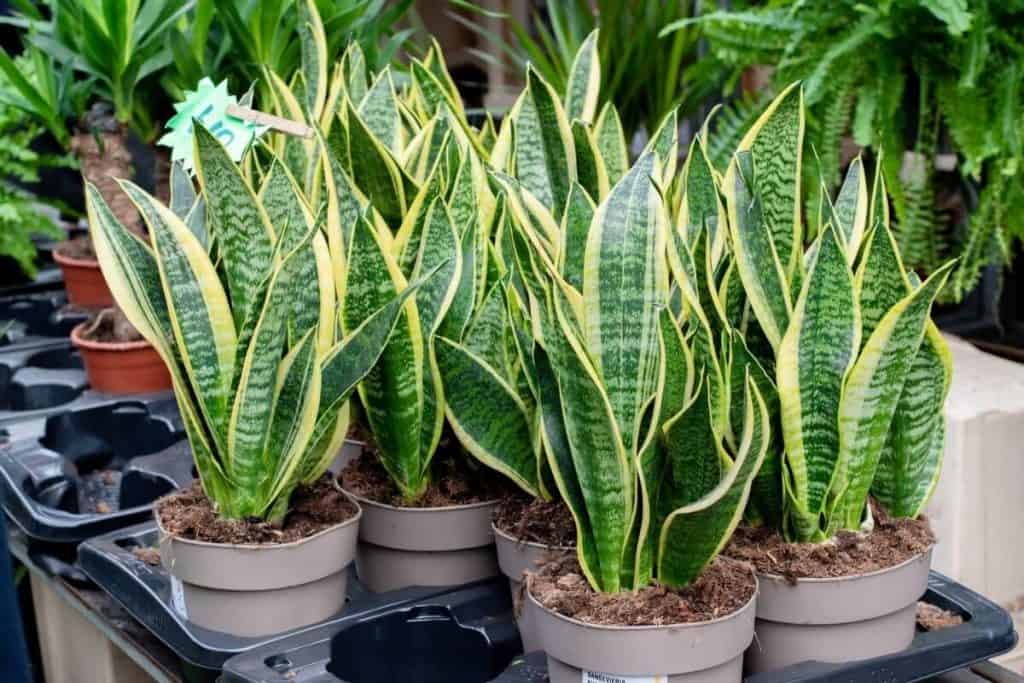
The snake plant is yet another succulent plant with upright spiky leaves. It’s popularly known as Mother-In-Law's Tongue, whoever is not familiar with a snake plant.
Snake plant is one of the most stubborn plants you can ever see and can survive anywhere, even if you have chosen to abandon it, as long as it manages to receive little water and sunlight.
It has strappy, spiky green leaves with yellow edges that would never die but remain fresh and alive as long as they can gain little water and sunlight by any means.
They can also thrive in both bright and low light conditions; therefore, they can survive in any area of your house.
Aside from being an attractive prospect and deterrent, the snake plant can also be used to keep our environment clean and healthy, as it helps to purify the air we breathe and kills toxins.
It also produces a sweet fragrance when stressed. These plants are prone to root rot; therefore, you need to examine the soil with your fingers to ensure the top layer of soil is dry.
6. Devil's Walking Stick (Aralia spinosa)
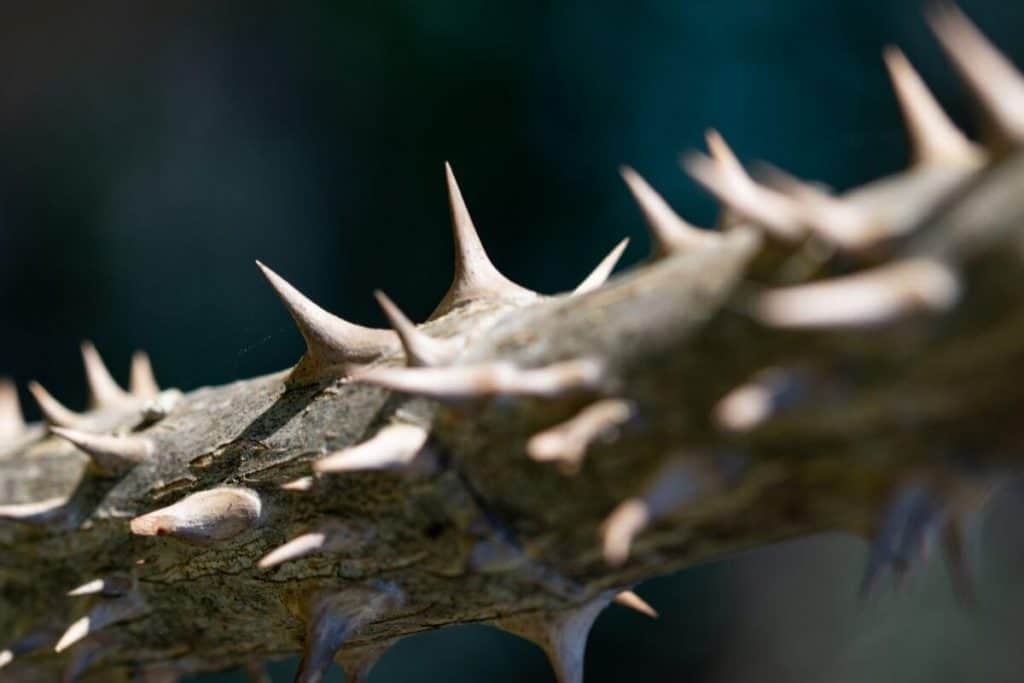
It is indeed the devil's walking stick, as it possesses dense spikes all around its branches and stems. The leaves also have lots of spiky prickles, which itself is a threat and deterrent to intruders.
It is a deciduous shrub that prospers best in average zones between 4 to 9, a well-drained soil, and a complete or half sunlight area.
The devil's walking stick is also known as Hercules club and prickly ash in some areas. It blooms in late summer, producing attractive white flowers that draw bees and other pollinators, which is why it's planted chiefly outdoors or in gardens.
It is also a fast-growing plant that self-seeds easily, thereby leaving you with tender specimens which show up in unwanted areas.
If you prune these plants as often as possible, they will maintain a shrubby, compact form but can also grow into a huge tree that stands around 20 feet tall.
However, like we earlier mentioned, it is not suitable in homes, as it can spread to large parts and dominate spaces and is valuable only when it produces a significant barrier of thorns.
Again, when the leaves drop during the winter, it is often an eyesore; hence, unlike others, not advisable for ornamental purposes.
Related Post: Flower Names in Alphabetical Order
7. Dragon Tree (Dracaena marginata)
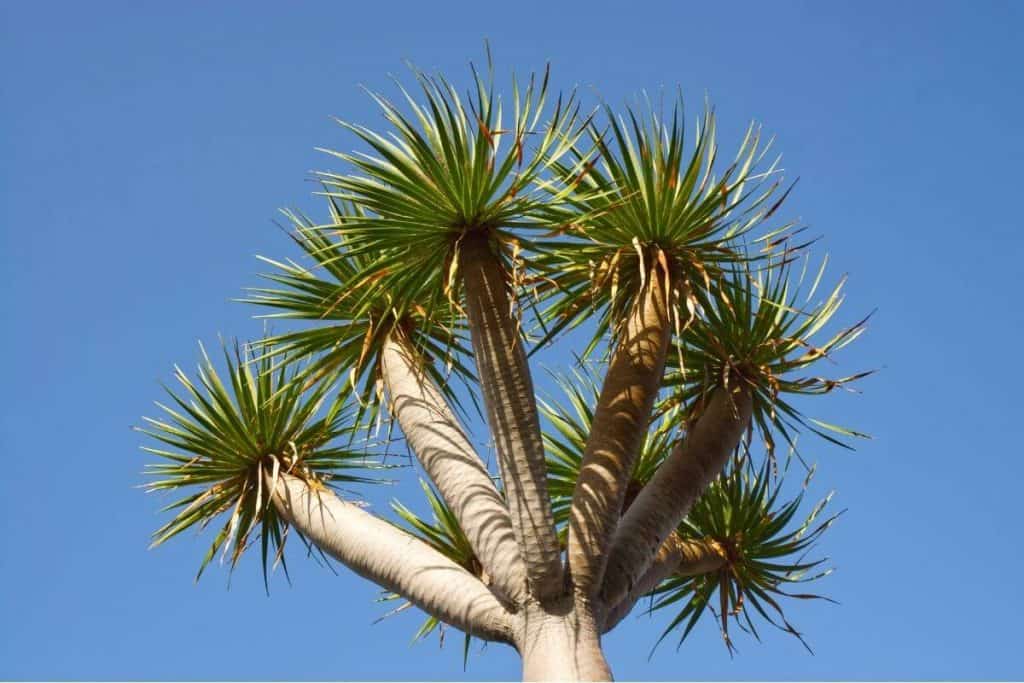
There is nothing much about the dragon tree other than a beautifying indoor plant with spiky leaves, which have a greenish color with red edges.
The dragon tree can survive a series of temperature conditions but thrives best under bright indirect sunlight areas. It is also a low-maintenance plant suitable for inexperienced gardeners.
Aside from the ones discussed above, others include:
- Yucca
- Porcupine tomato (solanum pyracantha)
- Holly shrubs and trees
- The crown of thorns
- Bougainvillea
- Californian Fuchsia
And others, with various sizes, shapes, and qualities.
However, you can place them in any location around your house or garden, as they will undoubtedly add impact and spectacle to that environment.
Some have the advantage of having medical and beauty features, which are easy to access to reap their benefits.
The easiest way to decorate plants with spiky leaves is to arrange them so that they can be in groups, create a spiky theme, and for those that you can plant in small catchy containers, you can use them to decorate your home interior.




